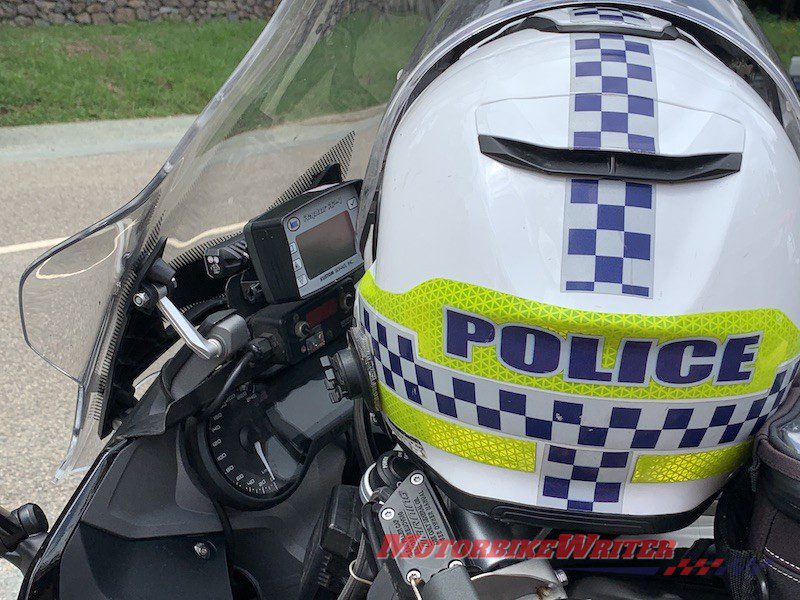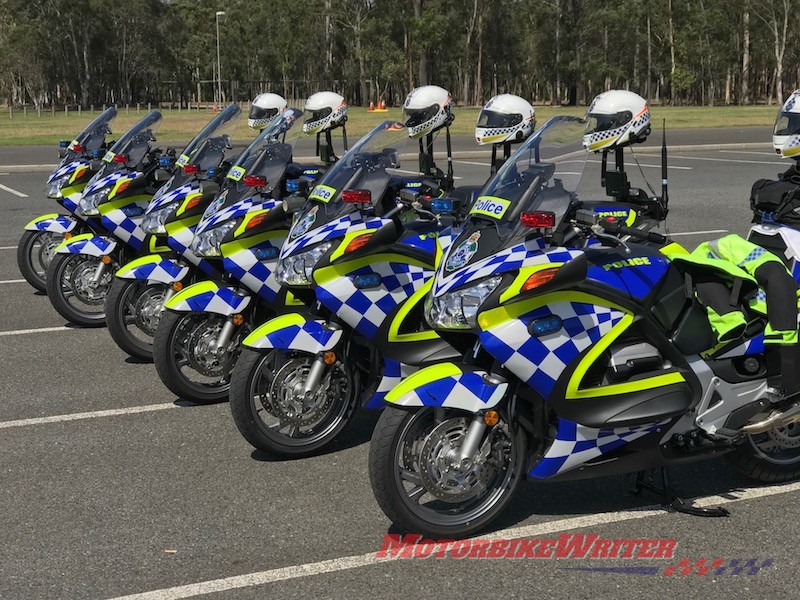Queensland Police claim a Maryborough rider “causing excessive noise” has died in a motorcycle crash in the Queensland city after a short police pursuit on Saturday afternoon (30 May 2020).
They say the rider, Damian Lawton, a father of one who turned 26 last week, “allegedly evaded police, accelerating away at speed and travelled through a stop sign before colliding with a Holden Barina”.

Family member Brendon Marshall says the family still does not know all the details of the crash, “but wish we could have stopped him and told him a fine wasn’t worth dying for”.
“I presume Damian took off as he’d had years of issues with his car licence,” Brendon says.
“He’d been suspended for years at a time due to continuous driving fines.
“He had a tendency to do things back to front, so wouldn’t have had a bike licence. He has a beautiful little two-year-old daughter. He had a heart of gold and would help anyone.
“He was no saint but he all wanted was a bike and because I have a GSX he wanted one.
“Please think before you run and, to the police, think before you chase. It is not worth a death.”
About 1pm, police say they received reports about a motorcycle travelling around Dunn Street and Panorama Drive “causing excessive noise”.
A Road Policing Command motorcycle officer patrolling nearby attempted to intercept the Suzuki GSX750 near the corner of Neptune and Woodstock streets.
“The motorcycle allegedly evaded police, accelerating away at speed and travelled through a stop sign before colliding with a Holden Barina,” police say.
Damian was thrown from the motorcycle and was pronounced deceased at the scene.
Our sincere condolences to the rider’s family and friends.
The occupants of the Barina were not injured.
Forensic Crash Unit investigations continue.
The matter is being investigated by the Ethical Standards Command, with oversight from the Crime and Corruption Commission.
If you have information for police, contact Policelink by providing information using the online suspicious activity form 24hrs per day at www.police.qld.gov.au/reporting.
You can report information about crime anonymously to Crime Stoppers, a registered charity and community volunteer organisation, via crimestoppersqld.com.au 24hrs per day.
Quote this reference number: QP2001117785 within the online suspicious activity form.
Police pursuits
The deadly result of a police pursuit over the minor matter of “excessive noise” is a serious issue.
A leading police study has found the three most pressing issues for police reform around the world are use of force, policing of violence in families and high-speed pursuits.
A 2009 Australian Institute of Criminology study found deaths in custody at police stations are declining but “deaths in custody” as a result of high-speed pursuits were rising.
While less than 1% of police pursuits results in a fatal crash, 38% of the people killed are innocent bystanders.
It’s much worse in the USA where one person dies every day as a result of a police pursuit. Of those deaths, 1% are police, 55% suspects and 44% bystanders.
Most police procedures acknowledge the judgement of the officer at the scene to begin a pursuit.
However, continuation of the pursuit is then deferred to a senior officer at the station or headquarters.
They have to make a quick judgement based on the lethal risk to the community of the chase versus the lethal risk to the community of letting a serious offender escape.
This must be backed by information, not just mere suspicion.
Queensland Police figures show only about 3% of pursuits involved imminent threat to life or a suspect escaping after a homicide.
Police have a duty to not only prevent and control crime, but more importantly, they have a duty to protect the community and that includes from their own reckless behaviour and judgement.



Restrictive practices
Despite criticism from police unions, most pursuit policies around the world, including the USA, are becoming more restrictive.
In many jurisdictions, pursuits are only allowed if there is a serious risk to public safety or in relation to a major crime involving death or injury.
However, there is an issue about making these pursuit policies public. Some say they should be public to show transparency while others believe it would give criminals clues on how to evade police.
Those who support pursuits point out that the number of people evading police is rising as a result of more restrictive pursuit policies, despite higher penalties for evading police.
Making the issue more complex is the degree of the pursuit.
Should there be an upper speed limit for police? Should police be allowed to break other road rules in the pursuit?
There have been incidences of police driving at more than 200km/h in a pursuit and on the road side of a major highway.
Another issue is whether police should be criminally culpable in the instance of a death resulting from a pursuit.
To a degree, technologies such as CTV and number plate recognition cameras, negate the need for pursuits, anyway.




